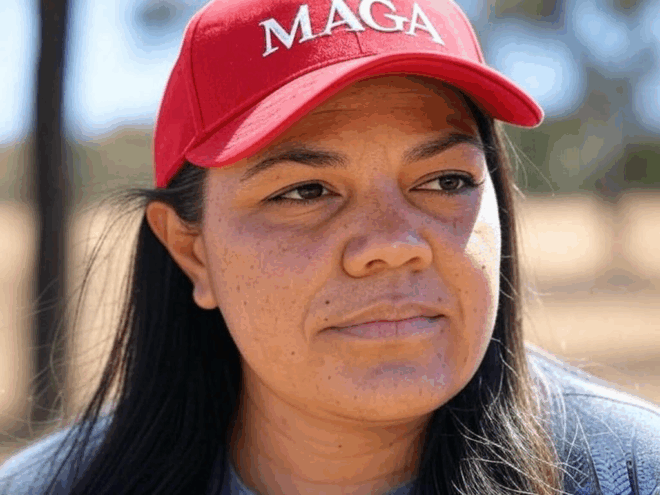
Abstract
The Australian federal election of May 3, 2025, resulted in a decisive defeat for the Liberal-National Coalition, led by Peter Dutton, against the incumbent Labor government under Anthony Albanese. This paper argues that the Coalition’s loss stemmed from two interconnected missteps: the prioritisation of loyalty to Dutton over objective ability in candidate selection, policy development, and campaign strategy, and the damaging impact of Senator Jacinta Nampijinpa Price’s embrace of “Make Australia Great Again” (MAGA) rhetoric. By fostering a culture of allegiance to Dutton’s conservative vision, the Coalition sidelined moderate talent and alienated key voter demographics. Price’s MAGA comments, echoing Donald Trump’s polarising slogan, amplified perceptions of ideological extremism, further undermining the Coalition’s appeal. Drawing on electoral data, public sentiment from X, media reports, and historical comparisons, this paper examines how these factors combined to cost the Coalition the election.
Introduction
The 2025 Australian federal election was a referendum on leadership, policy, and adaptability in a complex socio-political environment marked by economic uncertainty and global tensions. The Liberal-National Coalition, led by Peter Dutton since 2022, aimed to capitalise on voter dissatisfaction with Labor’s handling of cost-of-living pressures and international challenges. However, the Coalition suffered a significant defeat, losing key seats and failing to regain government. This paper contends that the Coalition’s loss was driven by its strategic error of prioritising loyalty to Dutton over objective ability, compounded by the controversy surrounding Senator Jacinta Nampijinpa Price’s invocation of “Make Australia Great Again” during the campaign.
Dutton’s leadership emphasised allegiance to his hardline conservative vision, marginalising moderate voices and stifling innovation. Price, a prominent Coalition frontbencher, became a lightning rod for controversy when her MAGA remarks and a resurfaced photo of her wearing a MAGA hat linked the Coalition to Trump’s divisive brand of politics. Together, these factors alienated moderate voters, reinforced Labor’s narrative of a Trump-inspired Coalition, and disrupted campaign momentum. This paper explores how these dynamics manifested in candidate selection, policy formulation, campaign execution, and public perception, situating the Coalition’s defeat within the broader context of Australian political history.
1. The Rise of Peter Dutton and the Culture of Loyalty
Peter Dutton’s ascension to the Liberal Party leadership in 2022 followed the Coalition’s defeat under Scott Morrison. His tough stance on immigration, national security, and economic conservatism appealed to the party’s right wing, which sought a return to core values. However, Dutton’s leadership style prioritised loyalty over merit, creating a hierarchy where allegiance to his vision trumped competence. This culture of loyalty permeated several key areas:
Party Room Dynamics
Dutton rewarded loyal supporters with key shadow cabinet positions, often overlooking moderate or more experienced MPs. For example, the promotion of ideologically aligned figures like Michael Sukkar over moderates like Simon Birmingham signaled a preference for loyalty over proven leadership.
Preselection Processes
Candidate selection for the 2025 election favoured Dutton loyalists, even in marginal seats. Local branches faced pressure to endorse candidates aligned with Dutton’s agenda, sidelining moderates who could appeal to centrist voters.
Policy Development
Dutton’s inner circle tightly controlled the policy agenda, stifling debate and innovation. The resulting platform leaned heavily on border security, tax cuts, and anti-Labor rhetoric but failed to address emerging issues like climate change and cost-of-living pressures in a nuanced way.
This loyalty-driven approach created an insular party culture, blinding the Coalition to the electorate’s shifting priorities, particularly in urban and suburban seats where moderate and progressive voters held sway.
2. Jacinta Price’s Role and the MAGA Controversy
Senator Jacinta Nampijinpa Price, the Coalition’s shadow minister for Indigenous Australians and government efficiency, was a central figure in the 2025 campaign. Her leadership in the “No” campaign against the 2023 Voice referendum and her compelling oratory made her a star among conservatives. In January 2025, Dutton appointed her to the newly created government efficiency portfolio, reminiscent of Trump’s Department of Government Efficiency (DOGE), signaling her alignment with his vision for a leaner government.
On April 12, 2025, during a rally in Perth, Price declared that the Coalition would “make Australia great again,” echoing Trump’s MAGA slogan. When questioned, she claimed ignorance of the phrase’s origins, accusing the media of being “Trump obsessed.” The next day, a resurfaced photo of Price and her husband wearing MAGA hats on Christmas Day 2024 intensified the controversy. Labor seized the opportunity, with Education Minister Jason Clare accusing Dutton of “cutting and pasting” Trump’s policies, and Victorian Labor posting on X: “Jacinta Price said the quiet part out loud. We can’t risk the DOGE-style cuts and the Americanisation of our healthcare, education and essential services.”
Dutton’s response was evasive, praising Price’s role in opposing the Voice while deflecting questions about her comments. His decision to encourage more questions for Price, leveraging her popularity, backfired, keeping the MAGA controversy in the headlines. X posts from users like @MayorDarcy and @philmupp1 reflected public frustration, framing Price’s remarks as evidence of the Coalition’s embrace of Trumpian populism.
3. Candidate Selection: Loyalty Over Ability
The Coalition’s candidate selection for the 2025 election exemplified its loyalty-driven approach, prioritising Dutton’s allies over candidates with broader appeal or experience. This strategy had several consequences:
Loss of Moderate Talent
The Liberal Party’s moderate faction was weakened under Dutton’s leadership. High-profile moderates like former MPs Tim Wilson and Katie Allen faced resistance when seeking preselection for winnable seats, as party powerbrokers favoured conservative candidates. For example, Wilson’s attempt to recontest Goldstein was undermined by a Dutton-aligned candidate, costing the Coalition a chance to reclaim the seat.
Failure to Reflect Diversity
The Coalition’s candidate pool lacked diversity, struggling to connect with Australia’s multicultural electorate. In seats like Chisholm and Reid, candidates failed to resonate with ethnic minority communities, ceding ground to Labor’s inclusive slate.
Parachuting Loyalists
The absence of moderates like Josh Frydenberg, who lost Kooyong in 2022, symbolised the Coalition’s failure to harness talent. While Frydenberg was not in parliament and thus not directly sidelined, the Coalition’s reluctance to support his potential return – through preselection or advisory roles – reflected its dismissal of moderate voices. X posts in 2024 speculated about Frydenberg’s comeback, but Dutton’s allies reportedly viewed his centrism as a liability.
Electoral data from the Australian Electoral Commission (AEC) shows a 4-6% drop in the Coalition’s primary vote in urban seats compared to 2022, particularly in Victoria and New South Wales, reflecting voter dissatisfaction with the party’s conservative lurch.
4. Policy Missteps: A Narrow, Loyalty-Driven Vision
The Coalition’s policy platform was shaped by Dutton’s priorities, emphasising national security, economic conservatism, and opposition to Labor’s social reforms. The loyalty-driven policy process, controlled by Dutton’s inner circle, stifled innovation and failed to address key voter concerns:
Climate Change
Dutton’s skepticism of renewables and focus on gas and coal alienated younger voters and urban professionals. X posts from environmental activists expressed frustration with the Coalition’s stance, which lagged behind public demand for ambitious emissions targets.
Cost of Living
The Coalition’s tax cuts for small businesses and high-income earners offered little relief for middle- and low-income households. Labor’s targeted measures, like energy bill subsidies, proved more appealing.
Social Issues
Dutton’s hardline rhetoric on immigration and gender identity, echoed by Price, galvanised the conservative base but repelled moderates. The Coalition’s opposition to Labor’s Indigenous recognition and transgender rights reforms was seen as out of touch.
Price’s government efficiency portfolio, with its Trumpian connotations, further tied the Coalition to controversial foreign ideologies. Her MAGA comments reinforced perceptions of a policy agenda borrowed from U.S. conservatism, undermining the Coalition’s credibility on domestic issues.
5. Campaign Execution: Tone-Deaf Messaging and MAGA Fallout
The Coalition’s 2025 campaign relied on fear-based messaging and attacks on Albanese, rather than a positive vision. This approach, driven by Dutton’s loyalists, was compounded by the MAGA controversy, which disrupted momentum:
Negative Campaigning
Adverts focused on Labor’s alleged economic mismanagement and “radical” policies. X posts calling for “policy over politics” suggested voter fatigue with divisive rhetoric.
Lack of Charisma
Dutton’s stoic persona struggled to connect beyond the base. His loyalists failed to soften his image, unlike Labor’s efforts to humanise Albanese.
Misreading the Electorate
The Coalition underestimated the importance of climate change and cost-of-living issues, focusing on culture wars and border security. Price’s MAGA remarks exacerbated this miscalculation, linking the campaign to Trump’s unpopular tariffs and divisiveness.
The MAGA incident dominated media coverage in April 2025, with Niki Savva describing it as a “nail in the coffin” for Dutton’s campaign. Labor’s narrative of a Trump-inspired Coalition gained traction, with Treasurer Jim Chalmers dubbing Dutton “DOGE-y Dutton.” X posts from users like @janelaw47492107 claimed Price’s “MAGA Queen” persona “buried” Dutton’s chances, particularly after tariff-related economic concerns.
6. The Combined Impact: Loyalty and MAGA as Electoral Liabilities
The interplay between Dutton’s loyalty-driven leadership and Price’s MAGA controversy was a lethal combination. The prioritisation of loyalty sidelined moderate talent, narrowed the policy platform, and alienated swinging voters. Price’s remarks amplified these issues by reinforcing perceptions of ideological extremism, particularly in teal-held and marginal seats. The Coalition’s failure to distance itself from Price’s comments – coupled with Dutton’s evasive response – reflected a broader inability to adapt to a centrist electorate.
The MAGA incident also highlighted the risks of elevating figures like Price, whose popularity with the base came at the cost of broader appeal. Her role as a loyal ally underscored Dutton’s preference for ideological conformity, mirroring the broader candidate and policy missteps. Together, these factors handed Labor a potent narrative, disrupted the Coalition’s campaign, and eroded trust among moderate voters.
7. Historical Context: Lessons Unlearned
The Coalition’s 2025 defeat echoes past losses where loyalty or polarising rhetoric cost electoral success. In 2007, John Howard’s government prioritised party unity over renewal, failing to counter Kevin Rudd’s optimism. In 2022, Scott Morrison’s leadership alienated moderates, leading to teal seat losses. Price’s MAGA remarks paralleled these missteps, importing divisive rhetoric that clashed with Australia’s diverse electorate. The Coalition’s failure to learn from 2022, when Morrison’s conservatism cost seats like Kooyong, underscored its strategic shortcomings.
8. Counterarguments and Rebuttals
Some may argue that the Coalition’s loss was due to external factors like inflation or Labor’s superior campaign. While economic challenges and global tariffs influenced voters, the MAGA controversy and loyalty-driven missteps were not inconsequential. They dominated media and social media, amplifying Labor’s narrative and undermining Dutton’s policy focus. Others might contend that Price’s popularity offset her MAGA remarks, but her appeal was confined to the base, limiting her impact on undecided voters. Similarly, while Dutton’s leadership unified the party, this unity came at the cost of electoral viability, as moderate voters defected.
Conclusion
The Coalition’s defeat in the 2025 federal election was a self-inflicted wound, driven by its prioritization of loyalty to Peter Dutton and exacerbated by Jacinta Price’s embrace of MAGA rhetoric. The sidelining of moderate candidates, adoption of a narrow policy platform, and reliance on divisive campaign tactics alienated swinging voters. Price’s MAGA comments and the resurfaced photo linked the Coalition to Trump’s polarizing brand, reinforcing Labor’s narrative of ideological extremism and disrupting campaign momentum. The absence of moderates like Josh Frydenberg symbolised the Coalition’s failure to harness talent, while Price’s prominence highlighted the risks of loyalty over pragmatism. To recover, the Coalition must foster a merit-based, inclusive approach that resonates with Australia’s diverse electorate, learning from the mistakes of 2025 to rebuild trust and competitiveness.
References
• Australian Electoral Commission (AEC). (2025). Federal Election Results.
• Posts on X (2024-2025). Public sentiment analysis on Coalition policies, Dutton’s leadership, and Price’s MAGA comments.
• ABC News. (2025). Jacinta Nampijinpa Price vows to ‘make Australia great again’.
• The Guardian. (2025). Image emerges of Jacinta Price wearing MAGA cap.
• Sydney Morning Herald. (2025). Peter Dutton’s campaign ambushed by Jacinta Price’s Trump obsessions.
• Daily Mail Online. (2025). Election 2025: Jacinta Price suffers awkward MAGA mix-up.
• Historical election data from AEC (2007, 2010, 2013, 2022).
• Media reports and political commentary from Australian outlets (2022-2025).

